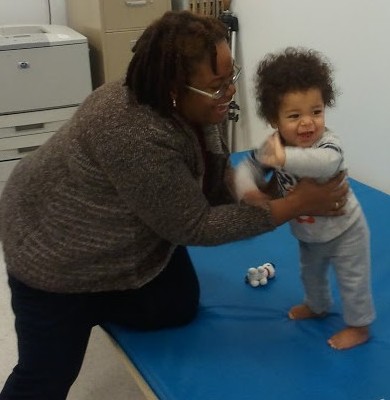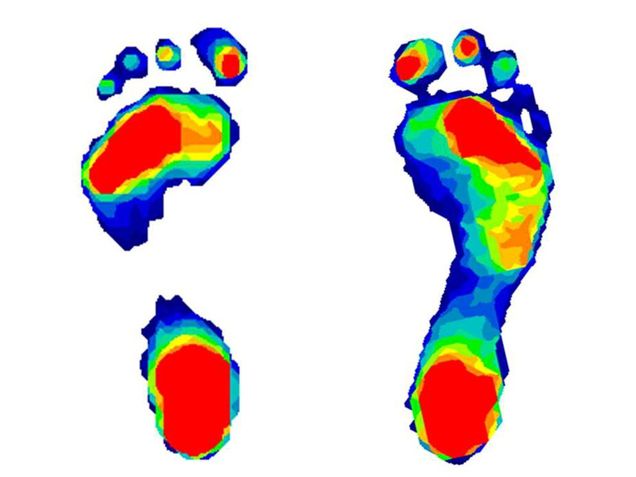Research
Current Research
Walking to the Beat
 The goal of this study is to examine how a person’s weight classification (normal, overweight, and obese) influences an individual’s ability to adapt to timing constraints while walking. Children and adults who are overweight or obese have been shown to sustain more injuries from falls than their normal weight counterparts, which could be due to timing differences while walking. To investigate this we asked college age adults and 5-7 year old children to walk across a mechanized gait carpet that records various parameters of their walk from timing to speed to distance. We have them complete this process for a number of trials at their own pace and a number of trials at predetermined slow, normal, and fast metronome paces. From this information we are able to see if the individuals are able to adapt their cadence to the specific metronome cadences. We are interested in finding out:
The goal of this study is to examine how a person’s weight classification (normal, overweight, and obese) influences an individual’s ability to adapt to timing constraints while walking. Children and adults who are overweight or obese have been shown to sustain more injuries from falls than their normal weight counterparts, which could be due to timing differences while walking. To investigate this we asked college age adults and 5-7 year old children to walk across a mechanized gait carpet that records various parameters of their walk from timing to speed to distance. We have them complete this process for a number of trials at their own pace and a number of trials at predetermined slow, normal, and fast metronome paces. From this information we are able to see if the individuals are able to adapt their cadence to the specific metronome cadences. We are interested in finding out:
-
-
-
- Is there a difference in the ability to adapt one’s steps to the timing of the metronome between the normal weight group and overweight/obese group?
- If there is a difference can the overweight/obese group learn to more closely match the timing constraints with practice?
-
-
Genetics and Walking in Twin Toddlers
 Our behavioral genetics study is done in collaboration with Dr. Kim Saudino and the BU Twin Project. We are interested in looking at the influence of genes and the environment on the development of walking in toddlers. To do this, we analyze different aspects of their walking skill by from videos. We conduct frame-by-frame video coding on recordings of twin pairs playing in a controlled environment at 2 years old and then again at 3 years old. Using a behavioral genetic approach with a twin design, we hope to explore the importance that both environmental and genetic factors play on the development of walking skill.
Our behavioral genetics study is done in collaboration with Dr. Kim Saudino and the BU Twin Project. We are interested in looking at the influence of genes and the environment on the development of walking in toddlers. To do this, we analyze different aspects of their walking skill by from videos. We conduct frame-by-frame video coding on recordings of twin pairs playing in a controlled environment at 2 years old and then again at 3 years old. Using a behavioral genetic approach with a twin design, we hope to explore the importance that both environmental and genetic factors play on the development of walking skill.
Obstacle Crossing Before and After Massive Weight Loss
 This study takes place at Boston Medical Center (BMC) in collaboration with Dr. David Felson’s research group and examines the way people walk and control their bodies before and after massive weight loss. We know that obesity increases the risk of falls and injuries, and we are interested in finding out if massive weight loss alone results in decreasing this risk. The patients in this study visit BMC twice. The first visit occurs prior to any weight loss and involves measuring gait parameters during walking with a mechanized gait carpet and wearable sensors. While walking down the gait carpet, individuals are asked to step over obstacles of different heights. Patients will return one year after undergoing bariatric surgery and repeat the same study procedure. The findings will help to uncover whether significant weight loss by itself is enough to improve gait and balance or if further gait training would be needed to reduce fall risk. We are also interested in how body composition impacts cognitive functioning. To investigate this connection further some patients will undergo an fMRI scan.
This study takes place at Boston Medical Center (BMC) in collaboration with Dr. David Felson’s research group and examines the way people walk and control their bodies before and after massive weight loss. We know that obesity increases the risk of falls and injuries, and we are interested in finding out if massive weight loss alone results in decreasing this risk. The patients in this study visit BMC twice. The first visit occurs prior to any weight loss and involves measuring gait parameters during walking with a mechanized gait carpet and wearable sensors. While walking down the gait carpet, individuals are asked to step over obstacles of different heights. Patients will return one year after undergoing bariatric surgery and repeat the same study procedure. The findings will help to uncover whether significant weight loss by itself is enough to improve gait and balance or if further gait training would be needed to reduce fall risk. We are also interested in how body composition impacts cognitive functioning. To investigate this connection further some patients will undergo an fMRI scan.
Past Research
Navigating Obstacles with Childhood Obesity
 The objective of this study is to investigate how children’s weight status relates to meeting task constraints while walking. We use 3D motion capture to record how children in three weight classifications (normal, overweight, and obese body mass index score classifications) move their bodies as they step over obstacles of different heights. Since children with overweight or obese body mass index scores sustain more injuries due to falls than children with normal weight body mass index scores, we are examining movement strategies used by the children that we test; do children with higher body mass index scores cross obstacles differently? Thus far, our studies show that they modify their movements in ways that predispose them to falls and injuries.
The objective of this study is to investigate how children’s weight status relates to meeting task constraints while walking. We use 3D motion capture to record how children in three weight classifications (normal, overweight, and obese body mass index score classifications) move their bodies as they step over obstacles of different heights. Since children with overweight or obese body mass index scores sustain more injuries due to falls than children with normal weight body mass index scores, we are examining movement strategies used by the children that we test; do children with higher body mass index scores cross obstacles differently? Thus far, our studies show that they modify their movements in ways that predispose them to falls and injuries.
Form and Function of the Arch in Walking
 This project is being done in collaboration with Dr. Jeremy DeSilva of the Boston University Anthropology Department at the Living Laboratory in the Museum of Science. We are looking to find out how the morphology of a persons foot relates to that individual’s gait pattern. Participants walk down a mechanized gait carpet which lets us analyze parameters of their gait allowing us to see similarities and differences in how they walk. Individuals also step onto a pressure mat that records the pressure their foot exerts on the ground while walking and we use this to recreate the shape of their foot. The goal of this study is to see if the shape of a person’s foot can tell us something about how they walk. We are particularly interested in whether obesity plays a role in the morphology of the foot. If so, does this affect the way a person walks?
This project is being done in collaboration with Dr. Jeremy DeSilva of the Boston University Anthropology Department at the Living Laboratory in the Museum of Science. We are looking to find out how the morphology of a persons foot relates to that individual’s gait pattern. Participants walk down a mechanized gait carpet which lets us analyze parameters of their gait allowing us to see similarities and differences in how they walk. Individuals also step onto a pressure mat that records the pressure their foot exerts on the ground while walking and we use this to recreate the shape of their foot. The goal of this study is to see if the shape of a person’s foot can tell us something about how they walk. We are particularly interested in whether obesity plays a role in the morphology of the foot. If so, does this affect the way a person walks?